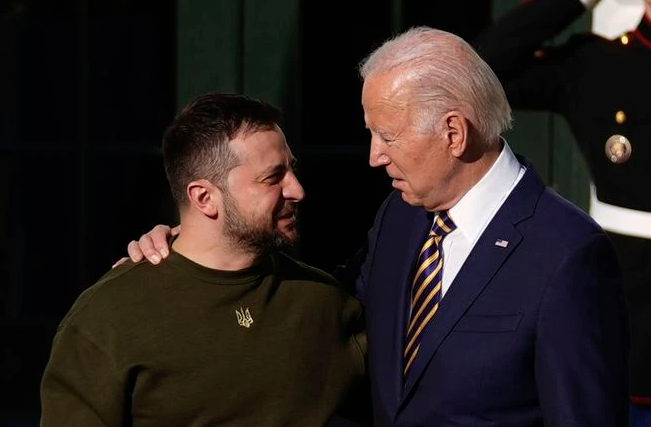The Biden administration has approved yet another $725 million in military aid to Ukraine, raising concerns among Americans about escalating U.S. involvement in a foreign war that many fear could spiral into a broader conflict. This latest package includes Stinger missiles, ammunition for High Mobility Artillery Rocket Systems (HIMARS), drones, TOW missiles, artillery rounds, and small arms, further entrenching the United States in the ongoing battle between Ukraine and Russia.
This move comes on the heels of a $275 million aid package announced just weeks ago, signaling an intensifying commitment to Ukraine as President Biden’s term draws to a close. Critics question the timing of this aid, with President-elect Donald Trump set to take office in January 2025. Trump has consistently voiced opposition to the blank-check approach to Ukraine, instead advocating for an immediate push toward negotiations to end the conflict.
Concerns Over Escalation
This latest decision to authorize long-range missile deployments, which could strike inside Russian territory, has raised alarm bells among critics who warn that such moves risk provoking an unpredictable response from Moscow. Skeptics argue that the administration’s policies are dragging the U.S. closer to direct involvement in a conflict with a nuclear-armed adversary.
“Why is the Biden administration so focused on escalating this war instead of seeking peace?” questioned a prominent conservative commentator. “Americans are footing the bill while our own national priorities—like border security and inflation—are being ignored.”
Zelensky’s NATO Proposal Raises Questions
Ukrainian President Volodymyr Zelensky has doubled down on calls for NATO membership, suggesting that areas under Kyiv’s control should fall under NATO’s protection. Such a move would all but guarantee U.S. military involvement if hostilities continue, effectively committing the nation to a direct confrontation with Russia—a scenario many Americans vehemently oppose.
A Divided Public
The Biden administration’s actions are increasingly polarizing. While some see the aid as necessary to counter Russian aggression, others view it as reckless, arguing that America is being dragged into a conflict that holds little benefit for ordinary citizens. The growing military aid packages come as inflation continues to squeeze families at home, and the southern border remains a crisis zone.
With President-elect Trump set to take office in January, many are hopeful for a shift in policy. Trump has vowed to prioritize America’s interests and work toward a swift diplomatic resolution in Ukraine, echoing his consistent “America First” approach. The question now is whether this massive military investment will pay off—or if it will bring the U.S. closer to a global conflict many are desperate to avoid.


